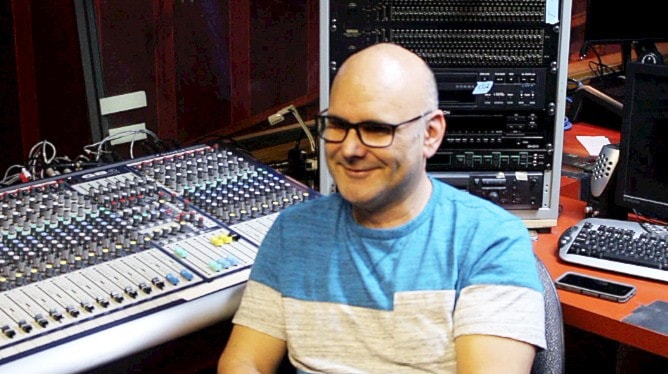It’s easy to see why Dwain Harrison was hand-picked to be the venerable Lester Centre of the Arts’ next technical director.
You couldn’t keep the guy away from the place if you wanted to.
“When Crystal calls, I never say no. Let’s put it that way,” said Harrison last week.
Lester Centre general manager Crystal Lorette found her plus-one to operate the facility this month and the process hasn’t been a long one to get Harrison up to speed on the ins and outs of the audio and lighting portion of the gig after longtime former technical director James Carlson had to step away from the job.
Harrison has been involved in almost every major production the centre has hosted since it opened its doors in 1987.
“I’ve been here pretty much since the beginning,” he said. “We did the first Tribute to Janis Joplin show, I think in 1989, and I’ve been doing productions here ever since, designing the audio.”
The newest member of the Lester Centre duo has worked on everything from Jesus Christ Superstar to Les Misérables to Rock of Ages, the latter of which, he describes as a “monster.”
“Rock of Ages was a very difficult show. I actually brought my own mixer down to accomplish the task because it had memory ... I think for that show we had 19 wireless mics and so it was a lot to look after. I had to actually call in a friend of mine to help me,” Harrison said.
Speaking in the sound booth at the centre, Harrison describes each tool in detail and what its function is during a live stage production, be it a musical, a dance performance, or a play. He’s the new go-to guy for it all.
The born and raised Rupertite has a handle on the sound aspects of the productions, but in the coming days he’ll acquaint himself with the lighting parts too.
“Lights will be uncharted territory for me, so I’m looking forward to learning it,” he said.
During an average production, Harrison is the whiz behind the sound box, moving his hands in concert with the cues to turn dials and press buttons in accordance with the timing of the production.
“My hands are on the faders. I’m reading a script, I’ve preliminarily marked all my cues onto the script ... As the cast moves offstage you want to make sure that their mics are silent before they go to their dressing room. They might be rustling with their wig or doing something and their headset is on the whole time.”
Even with the changing technology, Harrison hasn’t skipped a beat.
“I’ve never noticed the adjustment [to new technologies] because I’ve just been rolling with it as it comes along. As far as the computerization of society, I was in on that from the ground floor too. I think my first computer was a Radioshack [computer] and a Commodore 64 and now you can find that type of processor anywhere. Everything out there these days, including people’s phones have a million times the processing power that those first computers had,” he said.
Harrison had always been interested in the industry, starting out doing sound for rock and roll bands playing in local bars. The technical director in the late ‘80s asked Harrison at a pub if he’d like to work on the Janis Joplin show.
“It’s been a passion ever since, I’ve never looked back,” he said.
“It’s just always been a part of my life.”
